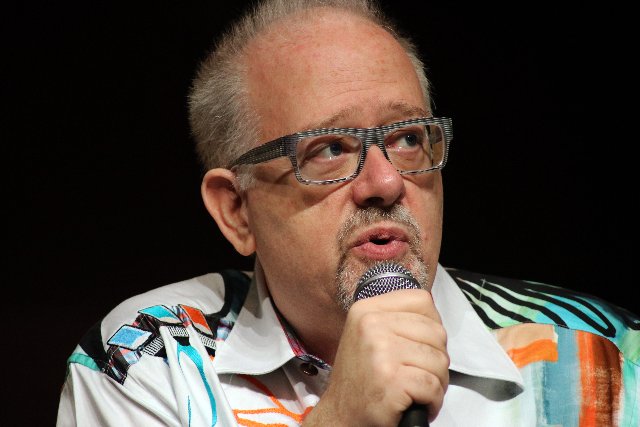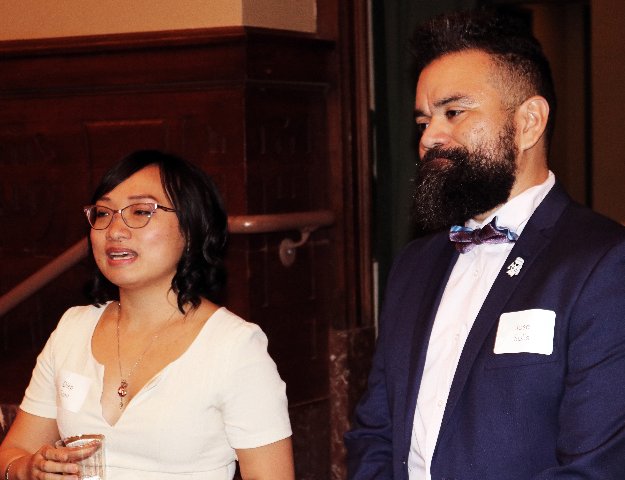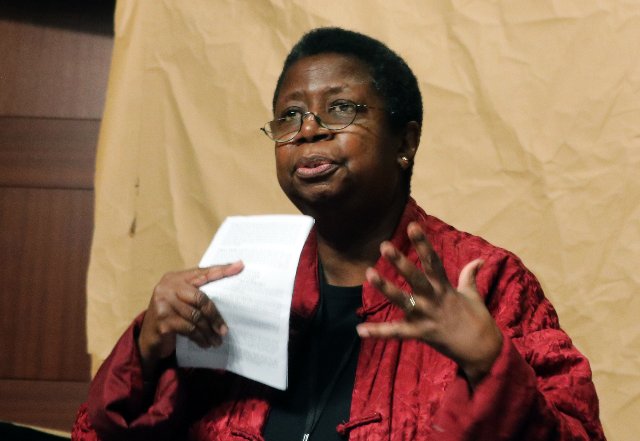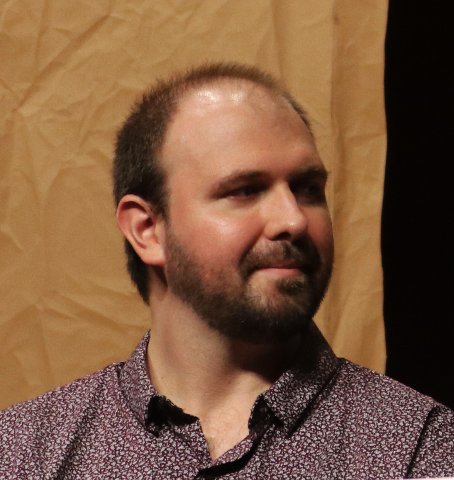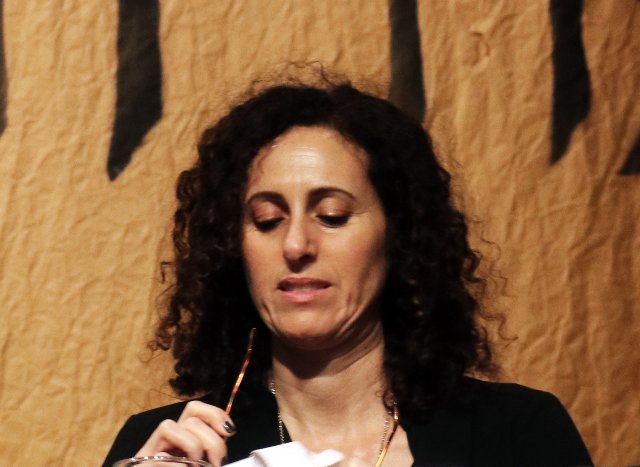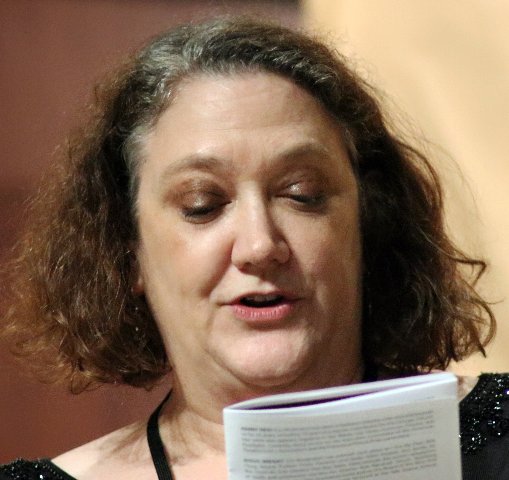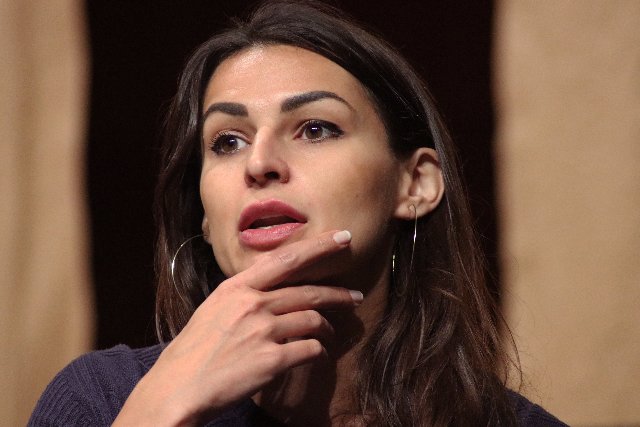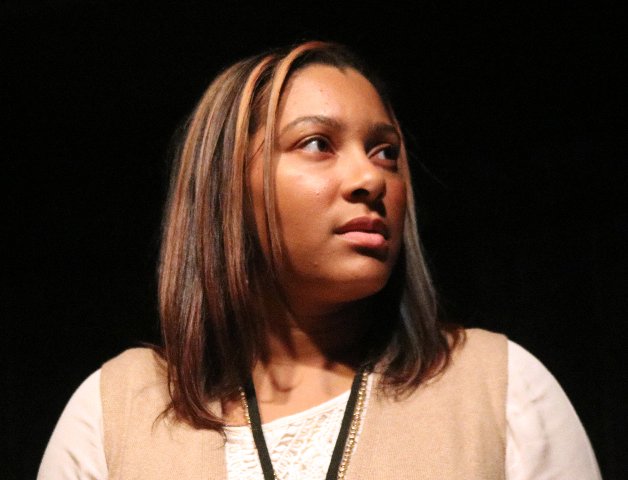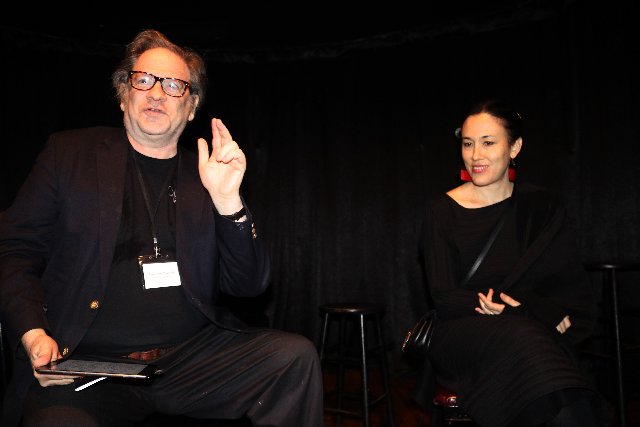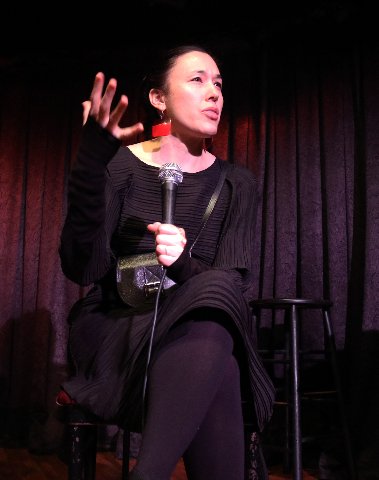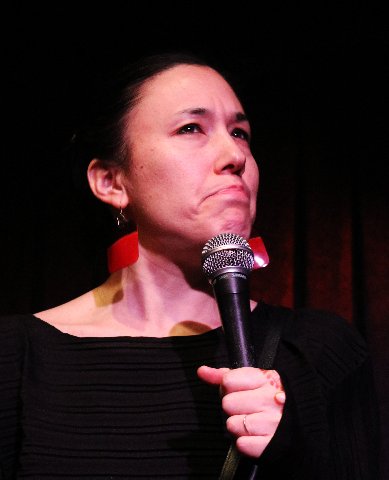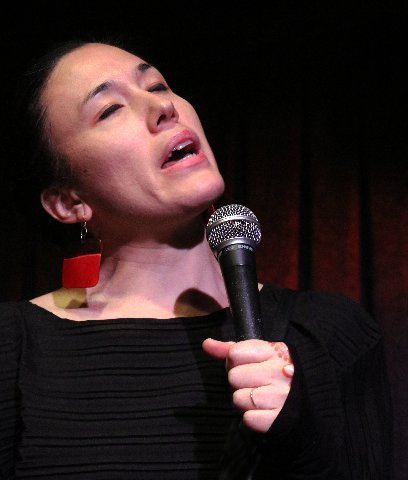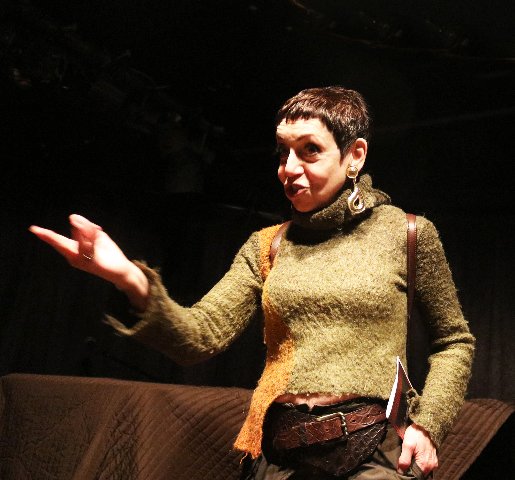ATCA Focuses on Diversity
Panel Discussions for NY Critic’s Conference
By: Charles Giuliano - Nov 16, 2018
With the erosion of print media there has been a dramatic impact on arts coverage. For hard pressed surviving newspapers, even in major markets, there have been cutbacks and elimination of categories including classical music and dance. Film and even theatre are now often covered through wire services.
Too many former, full time theatre critics are freelancers mostly for unpaid internet sites.
On the plus side there has been an enormous growth of on line resources. That includes young bloggers with no editorial oversight or mentoring. It also represents the diversity that is viewed as essential to sustaining the profession of criticism.
The issues of internet expansion and diversity of productions inform all aspects of theatre. While now in the spotlight, as we learned through panel discussions during the recent NY Conference of American Theatre Critics Association, theatre companies and individuals have been doing this work for decades.
We heard from ATCA’s diversity committee, which first met in March, when Milwaukee Rep hosted a weekend long Intersectionality conference. Much was learned during a weekend attended by ATCA’s executive and diversity committees. They met separately as well as in joint sessions.
Research and development are ongoing but key points have emerged. If ATCA is to survive it must become younger and more diverse. It is not, however, the mandate of the diversity committee to recruit new members. Rather, it is committed to identifying and vetting emerging critics and finding ways to support their development. ATCA is planning a major drive to promote the organization and recruit new members.
During a reception for former fellows of the Eugene O’Neill Foundation we heard from activists Diep Tran, an editor of American Theatre Magazine, and critic, Jose Solis. As a fellow Tran wrote a piece on assignment that went viral. She has been instrumental in bringing new critical voices to the magazine. They have created a lively podcast Talking Theatre which addresses diversity. Solis advised critics when comped with a pair to invite an emerging writer.
The diversity committee is compiling a national index of qualified emerging critics. The intent is to advocate for their access to theatre press lists and connect to blogs and publications to publish their work. As we see more diversity and social justice theatre there is a need to balance the equation about how it is covered.
With the themes of youth and diversity as a mandate the organizers of the NY conference set up intriguing and relevant sessions.
Moderated by New York critic, Janice Simpson, on Friday morning, we attended a two part program. The first of two sessions, Beyond Straight White Men: Diversity on Page and Stage, focused on theatre companies. The second meeting, co-moderated by Chicago critic Kerry Reid and playwright Doug Wright, presented playwrights.
Representing companies were artistic directors: Chrisopher Massimine of National Yiddish Theatre Folksbiene, Charles Weldon of The Negro Ensemble Company, Lameece Issaq of Noor Theatre, Chongren Fan of Pan Asian Repertory, Jacob Padron of The Sol Project, and Theatre Breaking Through Barriers, Nicholas Viselli.
Hearing from these companies, with diverse, niche audiences and agendas, revealed commonality. There was emphasis of place-having a roof over your head- and paying the rent or mortgage. We heard of different approaches from investing in real estate, leasing city owned properties, touring, and finding venues for productions.
While critics from all over the nation were present there were appeals to just come, see, and report on what is being done. These companies can’t rely on mainstream reviews. There need to be different strategies for getting the word out. While it is difficult to gain access to Broadway press lists, in general, Off Broadway and niche companies are welcoming to blog reviewers.
Covering Off Broadway companies offers an opportunity for young and emerging critics to compile the portfolio of clippings required to qualify for ATCA membership and present to mainstream press agents.
We met in the spacious auditorium/ stage of the Museum of Jewish Heritage in Battery Park. That proved to be the wonderful roof over the head of Christopher Massimine. He spoke insightfully of the current production of the classic “Fiddler on the Roof” which was being performed in Yiddish. There is a rich tradition of Yiddish theatre in New York particularly during the years of immigrants residing in the Lower East Side.
Charles Weldon spoke with the gravitas and insight of an elder statesman. He sketched the remarkable history and accomplishments of The Negro Ensemble Company which was founded in 1967. Real estate was a part of his focus as well as the struggle to get adequate coverage from outlets including the New York Times. Actors, directors and playwrights who have been featured over the years are a who’s who of American theatre. With rich anecdotes our ears perked to hear of some of them.
In the sea change represented by the recent midterm elections it is notable that two Islamic women are now members of Congress. It has been the agenda of the Trump administration to demonize Islamic Americans. Noor Theatre, as we heard from Lameece Issaq, is focused on the aesthetic contributions of this community. This is an aspect of social justice theatre that is slowly being included in programming by regional companies. There is a similar mandate for Pan Asian Repertory and the Hispanic programming of Sol Project.
These companies are dedicated to providing opportunities for diverse creators and their audience. The longevity of companies we heard from is vivid testament to their relevance and entrepreneurship. Key to their survival is the quality of theatre which is produced.
We heard from companies advocating race, religion and gender.The most intriguing panelist was Nicholas Viselli of Theatre Breaking Through Barriers. Not just in New York, it is one of the only national companies dedicated to performers, writers and directors with disabilities. The company was formed in 1979 as Theater by the Blind. With no permanent venue, emphasizing the ongoing struggle, Viselli described mounting seasons of two or three productions as well as ambitious tours.
The work of the company combines the theme of disability as well as plays cast with actors with disabilities. There are vivid examples of actors with disabilities including Broadway productions of Spring Awakening and The Glass Menagerie as well the Pulitzer Prize winning The Cost of Living. When the panel ended I approached Viselli for further discussion.
The playwright Martyna Majok was a panelist for the next session. I interacted with her then as well as during the critics luncheon at Sardi’s. She attended to receive ATCA’s Primus Prize. The Cost of Living had its world premiere at Williamstown Theatre Festival. It was an absorbing but difficult experience.
The playwrights panel, in addition to Majok, included Mike Lew (Tiger Dick, Tiger Style!), Nikkole Salter (Pulitzer Prize nominee for In the Continuum), Christopher Shinn (Pulitzer Prize finalist for Dying City), Doug Wright (Tony and Pulitzer winner for I Am My Own Wife), and Julia Jordan (winner of The Francesca Primus Prize for Tatjana in Color).
There were tag team questions from Reid and Wright. Those of Reid were discursive and broadly framed statements for the panel to respond to. There were complex dynamics of critics interacting with playwrights. It is the Biblical equivalent of the lion lying down with the lamb. There is much to be gained from similarity and differences.
Reid asked what playwrights hope for and expect from those who write about them?
The tradition has been to respect a Chinese Wall between critics and those we cover. In the golden age of print journalism there was the budget to separate arts journalists who write interviews, features and previews from critics who cover opening night. Those who survive at the arts desk are expected to do all of the above. During last year’s San Francisco conference we heard from a now retired critic for a daily paper who said that webcam podcasts had been added to his work load.
It gets complicated when a writer who has interviewed or written a feature about a production is then tasked with writing an objective review. It begs the question of relationships to artists and responsibility to inform the audience. Emerging critics have concerns about alienating a company that comps them for tickets. That is further exacerbated by companies looking for juicy pullout quotes to run with ads.
ATCA’s ongoing dialogue about establishing and maintaining professional standards for its members entails differentiating critical analysis from providing PR and marketing for companies. A cheerleading fanboy is not a critic. “Don’t miss this show” lacks critical observation. It is not the job of critics to sell tickets.
Companies and artists often state that they can accept fair, honest, and well substantiated criticism. Problems arise when critics cross the line with reviews that are mean spirited, harsh, and more about the writer than what is being reviewed. Personal pronouns are to be used sparingly if at all.
A panelist asked us to pay more attention to the reactions of the audience. When we cover opening nights, however, frequently there is a partisan audience of board members, patrons, friends and interns. We live in the era of pro forma standing ovations. More telling is when they do not occur. With more experience, commitment, and insight the critic often sees a production quite differently.
Wright brought up a prevailing concern. To what extent do the reviews of the surviving daily papers determine what is produced on Broadway and major market cities? In making multi million dollar decisions do producers second guess reviews? Conversely, do rave reviews determine the next generation of theatre? Does this result in conservative programming and aversion to risk taking?
Is Broadway just producing theatre potentially favored by the Times’ Ben Brantley and Jesse Green, or Terry Teachout of the Wall Street Journal?
During a time of increased focus on diversity how does that impact the work of playwrights? With the departure of Charles Isherwood from the New York Times Wright discussed being a part of a committee that met with arts editors discussing a replacement.
For ATCA’s New York conferences Wright has been a consistent presence on panels. As an advocate for writers' rights in the theatre industry, he is a member of the Dramatists Guild of America and currently serves as president of the non-profit organization.
His group argued for recognition of diversity. There was the opportunity to appoint a woman or person of color. With Jesse Green, however, as Wright stated the Times arts editor ignored legitimate concerns and appointed another middle aged, male, white, gay critic. Plus ça change, plus c'est la meme chose.
There were comments from the audience about how that has played out relatively early in Green’s tenure. Many, however, feel that it is an excellent and well qualified appointment.
In writing for a more diverse theatre the panel addressed challenges and concerns.
Initially studying acting Nikkole Salter developed a two person play with Danai Guira for a class at NYU. In the Continuum went on to several productions and was nominated for a Pulitzer Prize. With wit and charm she described being mentored by superb faculty. That entailed the extent to which that rigorous training and discipline shaped her outlook. Similarly, she wryly observed, if you graduate from Yale, you are going to think like Yale.
Although Martyna Majok won Pulitzer (and Primus Prize) awards for The Cost of Living there have been relatively few productions. For regional theatres a consideration has been casting two actors with disabilities in a four person play. She stated researching a roster of superb actors capable of the roles.
Speaking with Majok I asked if she knew Mandy Greenfield, artistic director of Williamstown Theatre Company, prior to the production? It was surprising to learn that she was informed by her agent that Greenfield had read the script. Given the limits of summer rehearsal time Majok described pressures of the production including set design. The performance was challenging as well as indelible. She has licensed transformation of the play into a musical.
Yet again, the conference ended with continental Sunday breakfast at the cabaret Don’t Tell Mama. There was a tribute with members sharing memories of critic Barbara Bannon. I remember her fondly as recording secretary for ATCA’s executive committee. She was respected and loved by many.
There were reports from Bill Hirschman, director of ATCA, and updates from the diversity committee.
An important work of ATCA and its membership is to vote on the annual Tony Award for Regional Theatre. Its role gets inadequate recognition and no mention during the televised awards ceremony.
It was long mandated that the award went to a theatre other than one in New York. That changed several years ago and there is concern for redefining the meaning and identity of regional theater.
There is no debate, however, that this year’s award to La MaMa is long overdue and richly deserved. Founded in 1961 by the redoubtable Ellen Stewart (1919-2011) it is the lone survivor of Off Off Broadway companies of that era. Others were Joe Cino's Caffe Cino, Al Carmines' Judson Poets Theatre, and Ralph Cook's Theatre Genesis.
New York critic, Jonathan Mandell, interviewed Stewart’s successor Mia Yoo. She joined the company in 1995 and vividly described keeping pace with Stewart through 20 hours bus rides during tours of Italy, France, Austria and Portugal. For this relentless work the avant-garde company was better known in Europe than recognized in America.
Again discussion focused on the importance of real estate. During the early years there were many moves. On April 2, 1969, Stewart purchased the building at 74A East 4th Street using grant money from the Ford, Rockefeller, and Doris Duke Foundations.
The ground floor is a theatre which seats 100. Originally called the La MaMa Repertory Theatre, the theatre is now called the First Floor Theatre. The second-floor space is a cabaret called the La MaMa Experimental Club with a capacity of 75. With additional funding, the third floor became a rehearsal space and workshop. The top floor was an apartment for Stewart.
In 1970, a decaying seven-story loft building at 47 Great Jones Street was purchased for additional rehearsal space, using money from the Ford Foundation. In 1974, La MaMa purchased 66 E. 4th Street. It includes a flexible theatre space for 299 as well as an upper floor dormitory for visiting artists. In 2009, the Annex was renamed the Ellen Stewart Theatre.
With property come issues of funding and maintenance as well as programming. There is a continuing commitment to mounting experimental theatre often with short runs. Yoo deftly described the challenge of keeping a lot of balls in the air at the same time. There were many wonderful anecdotes about the vision and legerdemain of Stewart. When given a MacArthur Foundation award in 1990 she used the money to purchase and develop La Mama Umbria International. Yoo described the current status of its growing fellowship programming.
Yet again we are grateful to Sherry Eaker and her committee for organizing a superb and varied conference.
Report on ATCA at Sardi's.

